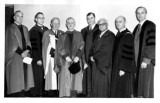| Title |
Union Theological Seminary Alumni Bulletin dated January 1957 |
| Alternative Title |
Union Theological Seminary Alumni Bulletin |
| Creator |
Union Theological Seminary (New York, N.Y.) |
| Publisher |
Digitized by J. Willard Marriott Library, University of Utah |
| Date |
1957-01 |
| Subject |
Union Theological Seminary (New York, N.Y.); Atiya, Aziz Suryal, 1898-1988; Articles; Education; University administrators; University administration |
| Description |
1. Jan. 1957 issue of Union Theological Seminary Alumni Bulletin, 4 pages. Includes a note on the installation of new faculty, including Atiya. 2. Photo from the above mentioned note, front and back |
| Type |
Text; Image/StillImage |
| Genre |
Articles |
| Format |
application/pdf |
| Collection Name |
0480_005_006 |
| Collection Number and Name |
0480_005_006 Aziz Suryal Atiya Papers |
| Language |
eng |
| Rights |
 |
| Relation |
http://archiveswest.orbiscascade.org/ark:/80444/xv99560 |
| Conversion Specifications |
Original scanned on Epson Expression 10000 XL and saved as 400 ppi TIFF. Display image generated in CONTENTdm |
| Scanning Technician |
Niko Amaya |
| File Name |
0480_005_006_Union_Theological_Seminary_Alumni_Bulletin.pdf |
| ARK |
ark:/87278/s696098p |
| Setname |
uum_asap |
| ID |
779097 |
| Reference URL |
https://collections.lib.utah.edu/ark:/87278/s696098p |










